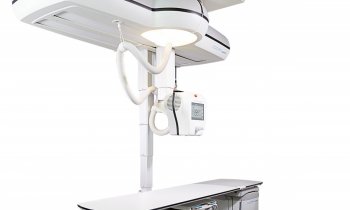X-Rayed Masterpieces
Even today, 105 years later, the X-rays have not lost their fascination and importance. The discovery of X-rays in November 1895 by the physicist Wilhelm Conrad Roentgen introduced the 'X-ray era' and caused great change in all areas of life. One of the most fascinating fields of research is the analysis of works of art by means of X-rays. The 'anatomical structure', i.e. the composition of the painting, emerges. In contrast to the human organism, which shows almost equal anatomical proportions with well-known specific density ratios, the composition of paintings can be very different. Apart from a systematic viewing of inner structures, revealing the original version is especially important in an art historical analysis. Changes during the creative process, e.g. the 'pentimenti,' are of great interest to the analyst and can also aid in the interpretation of the picture.

This article was first published in the VISIONS, issue 3/2002, a publication of Toshiba Medical Systems
27.08.2007











